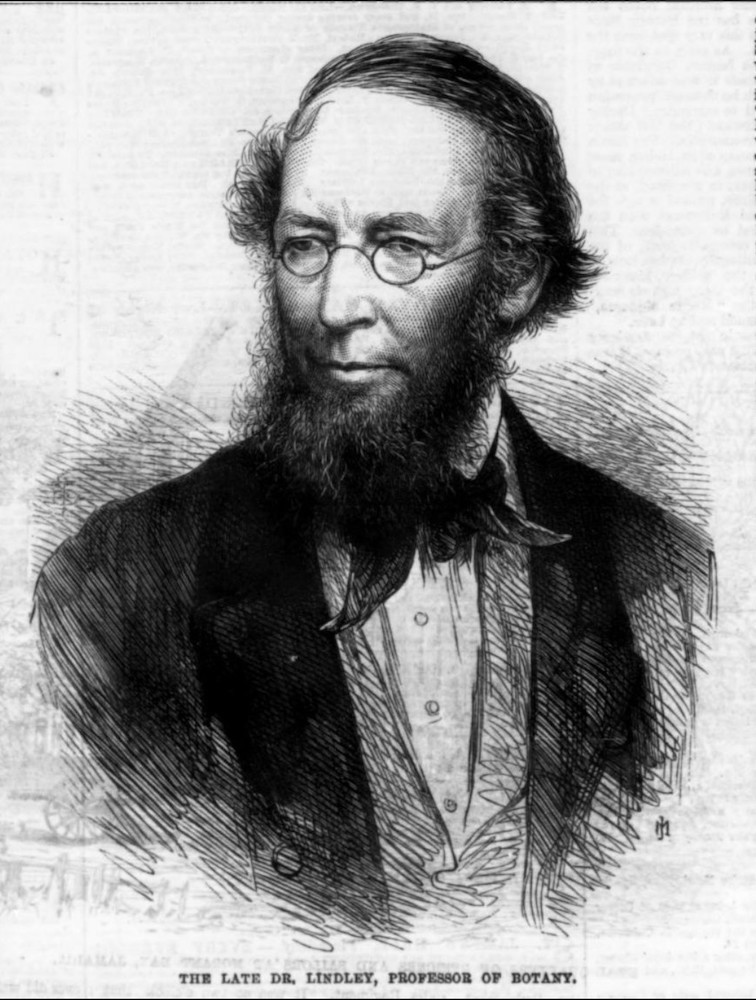
John Lindley (1799-1865) was an outstanding and pioneering botanist in an age when botany (due in no small part to his own encouragement) was a popular pursuit. His "fundamental achievement in the classification, description, and naming of orchids" (Stearn 8) is but one of his many legacies to his discipline, the most important of which was probably his arrangement of plants into a more comprehensible "natural system," in which their families and orders share the same suffixes. He was a hands-on gardener, an enthusiast as well as an industrious academic, a popular lecturer, and a strong believer in the medicinal potential of plants. A man of drive and determination, he was instrumental in securing the future of Kew Gardens when it was urgently in need of rescue, and played a part in other important aspects of public life. Overwork (mandated partly by financial circumstances) and contact with the mercury he used for fixing his specimens, may well have hastened his rather early decline and death. Many plants are named after him, and the Royal Horticultural Society issues a Lindley Award annually "to the best educational exhibit shown to the RHS during the year" ("RHS People Awards").
Lindley's obituary in the Illustrated London News is accompanied by the portrait shown here, and covers some of his main achievements. It has been transcribed, linked and further illustrated for our website by Jacqueline Banerjee.
THRee or four weeks ago we had to record the death of Dr. John Lindley, one of the most eminent of modern English botanists and the author of the best books we have upon various departments of that science. He was born on the 5th of February, 1799, at Catton, near Norwich, where his father was proprietor of a large nursery-garden. After leaving the Grammar School of Norwich he devoted his attention to botanical studies. In 1819 he published a translation of "Richarda’s Analyse du Fruit," and in 1820 a work entitled "Monographia Rosarum," in which he described several new species of roses.
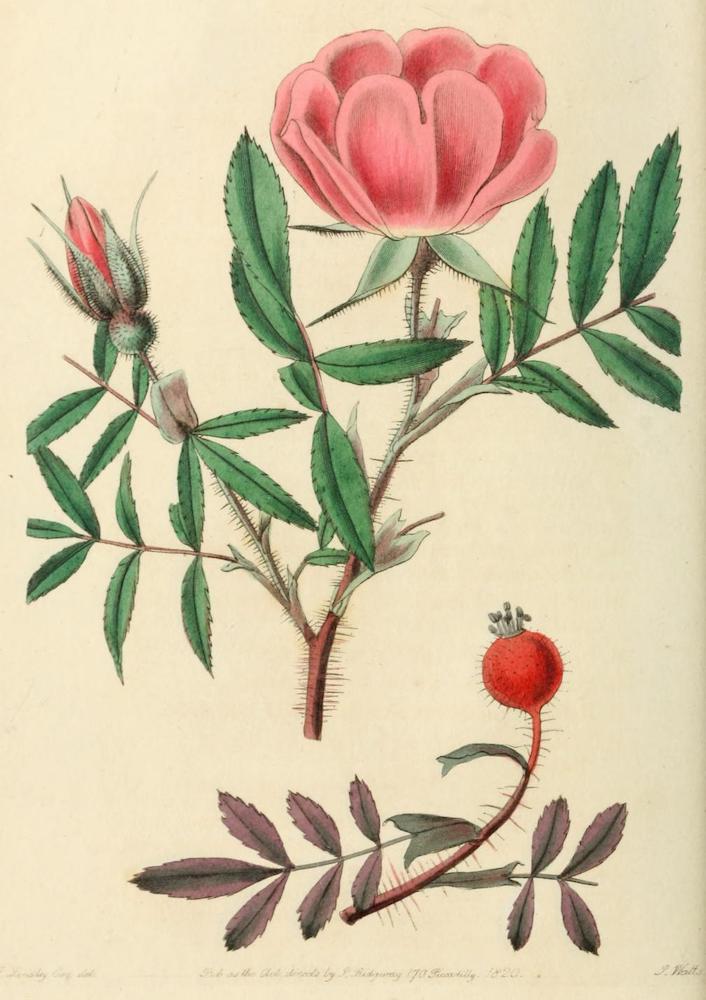
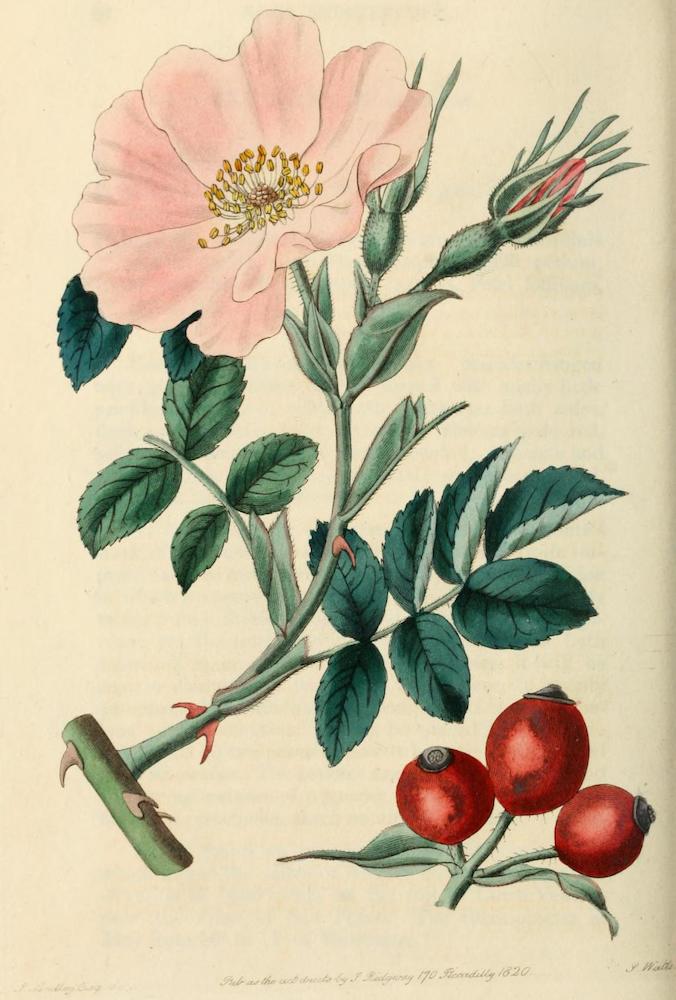
Two plates from Rosarum Monographia [sic] signed in the lower left by Lindley himself. Left: Rosa Nitida, facing p. 13. Right: Rosa Caucasea, facing p.97.
About the same period he contributed to the Transactions of the Linnean Society various papers on botanical subjects, Some time afterwards he came to London, where he became assistant secretary to the Horticultural Society, and was engaged by Mr. Loudon to write the descriptive portion of his "Encyclopaedia of Planta," the merit of which, as a botanical work, was entirely due to him, as was stated in the preface. The "Encyclopaedia" was completed in 1829. In the same year he was appointed Professor of Botany at University College, London. At this period the Linnean system was almost universally followed by English botanists. It is one of the chief merits of Dr. Lindley that he early saw the necessity of superseding the artificial by the natural classification of plants. In an essay on this subject, contained in his “Introduction to the Natural System of Botany,” published in 1836, he showed very clearly what the advantages of this system were, and thus paved the way for its general adoption in England.
Two years later he published the "Introduction to Systematic and Physiological Botany, and a Synopsis of the British Flora," in which our indigenous plants were arranged and described for the first time according to the natural system. In "A Natural System of Botany," published in 1836, Dr Lindley took new views of botanical classification, and proposed a new nomenclature for the families of plants. Ten years later his great work, "The Vegetable Kingdom," was published. This work, the most elaborate that had appeared on systematic botany, gave a description of all the families of plants, and more especially of those useful to man. It gave very extended lists of the genera, and was generally recognised as one the most important contributions which had at that time appeared on systematic botany.

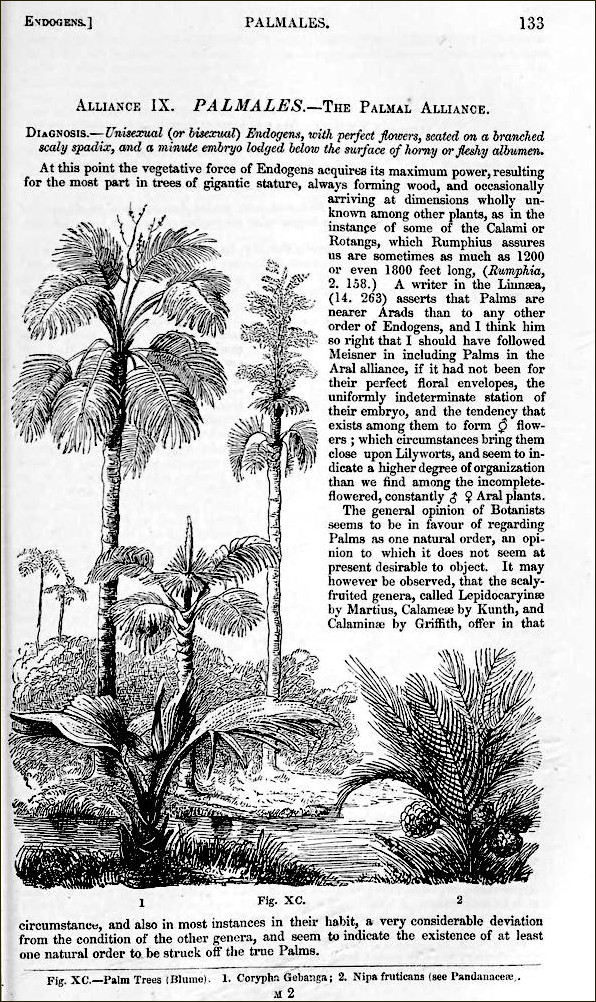
Left: The dedication of A Natural System of Botany, showing Lindley's interest in the medicinal value of plants. Right: Title page of the third edition of The Vegetable Kingdom, which is illustrated by many woodcuts.
While engaged in writing these works Dr. Lindley was most diligently employed, as a practical botanist, in describing new species, on which he wrote a large number of papers contributed to botanical publications. In 1841 he became editor of the Gardener's Chronicle, a weekly publication, which he conducted with great ability.
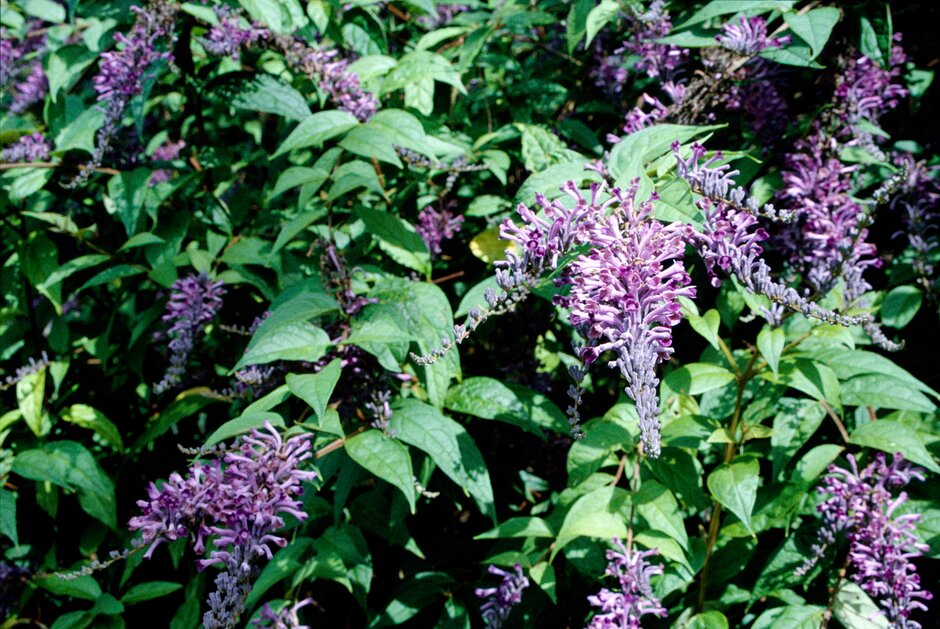
The popular Buddleja lindleyana, Lindley's Butterfly Bush, found in many a garden, pays tribute to the pioneering botanist. Photo credit: RHS / Zebrina Rendall, provided for us and reproduced here by kind permission.
In 1860 he was appointed examiner in the University of London. He was a Ph.D. of Munich and a Fellow of the Royal Society, of which, in 1858, he received the medal as a reward for his services to botanical science. Our Portrait is from a photograph by Messrs. Maull and Polyblank. [553]
Bibliography
"Buddleja lindleyana, Lindley's Butterfly Bush." RHS. Web. 18 June 2025. https://www.rhs.org.uk/plants/2455/buddleja-lindleyana/details
"The Late Professor Lindley." Illustrated London News. Vol. 47 (9 December 1865): 553. Internet Archive. Web. 18 June 2025.
_____. Rosarum Monographia: A Botanical History. London: James Ridgeway, 1820. Internet Archive, from the collection of the University of Illinois, Urbana-Champaign. Web. 18 June 2025.
_____. The Vegetable Kingdom: The Structure, Classification, and Uses of Plants, Illustrated upon the Naturl System. London: Bradbury & Evans, 1853. Internet Archive, from the collection of the University of Arizona. Web. 18 June 2025.
"RHS People Awards." RHS. Web. 18 June 2025. https://www.rhs.org.uk/about-us/our-people/rhs-awards
Stearn, William Thomas. John Lindley, 1799-1865: Gardener-botanist and Pioneer Orchidologist : Bicentenary Celebration Volume. Woodbridge, Suffolk: Antique Collectors' Club in association with the Royal Horticultural Society, 1998.
Created 18 June 2025
Last modified 27 November 2025